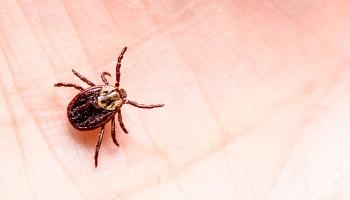New microbes discovered in a red fox, homemade kefir and a tick
Posted on January 14, 2020 by Laura Cox
Each month, the Microbiology Society publishes the International Journal of Systematic and Evolutionary Microbiology (IJSEM), which details newly discovered species of bacteria, fungi and protists. Here are some of the new species that have been discovered and the places they’ve been found.
This month a new species of bacteria was found in another micro-organism. While investigating the toxic dinoflagellate Ostreopsis lenticularis, researchers in China found a new species of rod-shaped bacteria which they named Nioella ostreopsis. Dinoflagellates are a subgroup of protists made up mostly of marine plankton. These single-celled algae mostly use light to generate energy and are incredibly important in both marine and freshwater systems.

Fermented drinks like kombucha and kefir are becoming increasingly popular alternatives to soft drinks thanks to their lower sugar content and reported health benefits. Water kefir is made by using a complex community of yeasts and bacteria to ferment a mixture of water, dried fruits and sugar. This month researchers have discovered a new species of bacteria in homemade water kefirs in Germany, which they named Bifidobacterium tibiigranuli.
Researchers in Spain discovered a new species of bacteria in the faeces of a red fox this month. The research group, based at the University of Granada, were searching for bacteria that degrade chitin, which is a major component of the exoskeleton of arthropods and makes up the cell walls of fungi. These bacteria produce grey colonies when grown in the lab and was named Psychrobacillus vulpis.
A new, bright yellow bacterium has been discovered in Antarctica this month. The new species, which researchers named Sanguibacter antarcticus was found in sea sand on King George Island. In warmer climes, Algoriphagus aquimaris was also discovered in sea sand off the coast of Korea.

A team of researchers based in Germany and the US have identified a new species of the genus Borrelia. Bacteria in this genus are spiral-shaped, transmitted by ticks and lice and include the causative agents of Lyme disease. The new species was found in a tick from the San Francisco Bay area and was named Borrelia maritima.
A new, light pink species of yeast was discovered in a lake in the middle of a desert in Egypt. The yeast – named Mycosarcoma aegyptiacum – was found to have strong antifungal activity against some common pathogens that affect crops after they have been harvested. M. aegypiacum was not the only pink microbe to be discovered this month; Limnoglobus roseus was found in a lake in northern Russia. According to the researchers, this new species of bacteria has a giant genome (over three-times the size of the genome of Staphylococcus aureus!) and grows best at cooler temperatures.
Also known as the ‘roof of the world’ the Tibetan Plateau is the largest and highest plateau on Earth with an average elevation of over 16,000 feet. This month, researchers have found two new species of microbe in this isolated ecosystem. A yellow, rod-shaped bacterium called Luteimonas yindakuii was found here on the leaves of a dandelion. Also on the plateau, Microbacterium wangchenii was isolated for the first time from the faeces of a Tibetan gazelle.

The full papers describing these species are available to journal subscribers, but the abstracts are free to read. Articles can also be purchased individually with the pay-per-view option.

